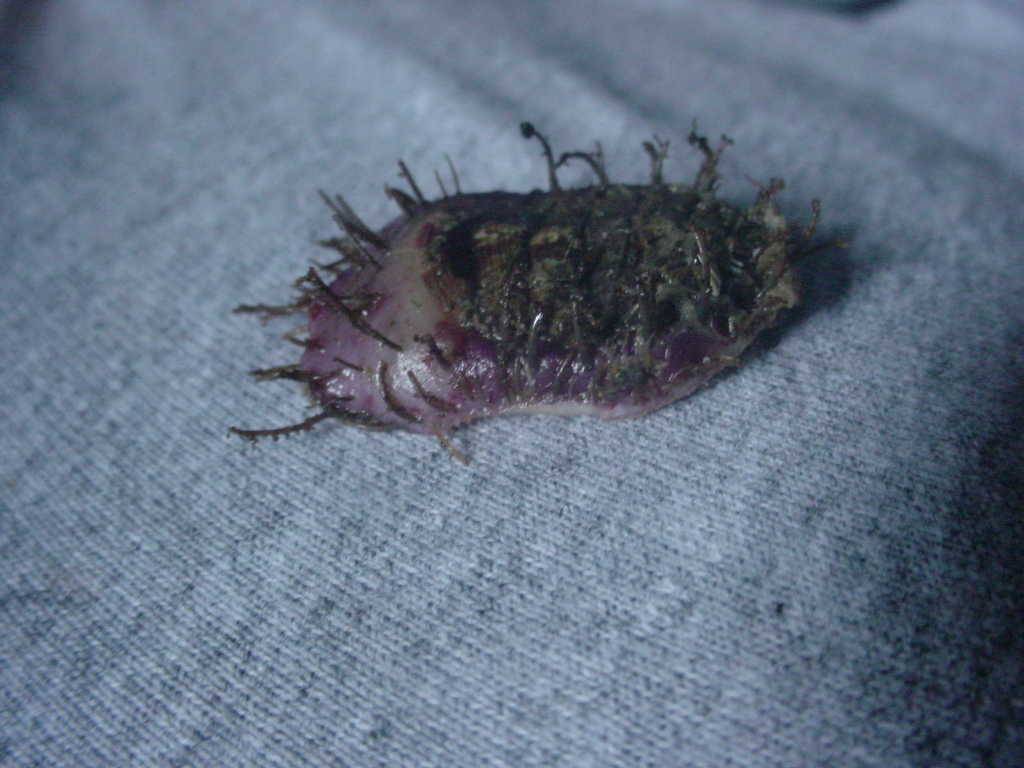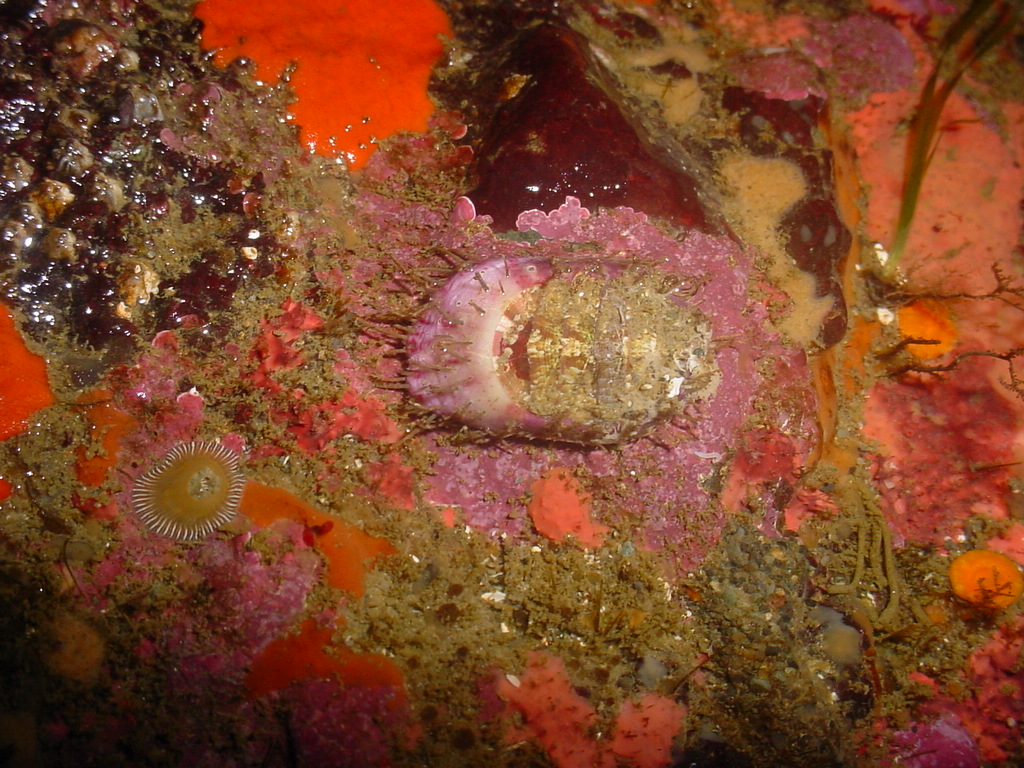Placiphorella velata Carpenter in Dall, 1879Common name(s): Veiled chiton |
|
| Synonyms: Possibly conspecific with P. stimpsoni |  |
| Phylum
Mollusca
Class Polyplacophora Order Neoloricata Suborder Chitonina Family Mopaliidae |
|
| (Placiphorella velata, about 3 cm long, in cave at Cape Flattery. Anterior veil is to the left) | |
| (Photo by: Dave Cowles July 2004) | |
How to Distinguish from Similar Species: Veiled chitons are unique--no other chiton has the large veil. Placiphorella rufa (Red-veiled chiton, Aleutians to Oregon) is mostly subtidal, up to 2 cm, and presumably has a red veil.
Geographical Range: Forester Island, Alaska to Isla Cedros, Baja California and upper Gulf of California
Depth Range: Very low intertidal and subtidal
Habitat: Usually in shaded depressions or crevices or under rocks on open coast, usually associated with crustose coralline algae.
Biology/Natural History: This species can be a grazer on microalgae or a carnivore. As a carnivore it traps small crustaceans and worms under the veil by lowering it rapidly, "stomping" on them when they crawl beneath it. Smaller crustaceans (2 mm and below) are swallowed whole. Larger prey including crabs up to 1 cm across are torn up by the radula before being eaten. Uncommon. Spawn in September in California.
| Return to: | |||
| Main Page | Alphabetic Index | Systematic Index | Glossary |
References:
Dichotomous Keys:
Kozloff,
1987,
1996
Smith and Carlton, 1975
General References:
Morris
et al., 1980
Kozloff
1993
O'Clair
and O'Clair, 1998
Scientific Articles:
General Notes and Observations: Locations, abundances, unusual behaviors:

The pale-colored veil is clearly visible in this photo taken in a cave at Cape Flattery. Dave Cowles July 2004
Authors and Editors of Page:
Dave Cowles (2004): Created original page